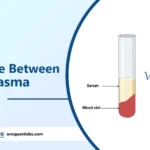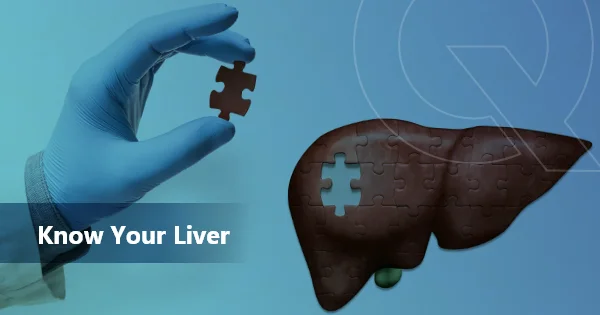For those who breathe through the weight of silent struggles, hope begins with knowing—early detection can change everything. At Oncquest, we believe diagnosis isn’t just about finding a disease, it’s about finding a chance… a chance to breathe easier, to fight stronger, and to live fuller. With the KL-6 ILD test, we bring that chance closer, as every breath matters, every heartbeat deserves time.
Interstitial Lung Diseases (ILDs) are a group of disorders characterized by chronic inflammation and progressive fibrosis (scarring) of the lung interstitium. While symptoms are often attributed to common respiratory issues, they can mask a much more serious underlying condition: ILD.
According to global health reports, ILDs, such as Idiopathic Pulmonary Fibrosis (IPF), present a significant, often silent, epidemic. The true tragedy lies in the delay of diagnosis, which can lead to irreversible lung scarring. With Non-Invasive KL-6 Serum Biomarker Test we not only stand at the threshold of a diagnostic revolution but can initiate action before it’s too late.
We are proud to highlight the clinical utility of Krebs von den Lungen-6 (KL-6), a reliable, non-invasive serum biomarker at our National Reference Lab. This breakthrough test allows clinicians to detect and monitor ILDs earlier, more accurately, and less invasively than ever before, giving families and physicians valuable time for care, planning, and treatment.
What Makes This Test Different?
Traditionally, diagnosing ILD required a multidisciplinary approach integrating invasive procedures and complex imaging. This innovation changes this: a simple blood test can now identify the earliest biochemical signs of alveolar epithelial cell injury and regeneration, a key feature of ILD.
The Science at Work
The test measures the level of Krebs von den Lungen-6 (KL-6), a mucin-like high-molecular-weight glycoprotein. KL-6 is normally expressed on type II alveolar epithelial cells.
In ILD, injury to the alveolar epithelium triggers a reparative response, leading to the proliferation and hyperplasia of type II pneumocytes, the primary source of KL-6. This injury, coupled with increased epithelial permeability, results in the significant upregulation and release of KL-6 into the systemic circulation, making it a reliable biomarker.
Name of the test: Serum KL-6
Sample type : Blood
Key Advantages
- Diagnostic Biomarker – Elevated KL-6 levels support the diagnosis of ILD.
- High Diagnostic Accuracy – Meta-analyses show high sensitivity (up to 91.304%) and specificity (up to 97%) for detecting ILDs. and specificity (0.97 [95% CI: 0.90–0.99]) of KL-6 for ILDs., The Youden’s index of serum KL-6 for the diagnosis of ILD was 421.775 U/ml and the sensitivity and specificity of the serum KL-6 were 91.304% and 95.652%, respectively, showing a high diagnostic value (P<0.05).
- Prognostic Indicator – Persistently high KL-6 levels correlate with poorer survival and rapid lung function decline.
- Less Invasive – Requires only a simple blood draw, complementing invasive procedures like lung biopsies or bronchoalveolar lavage (BAL).
- Monitoring Disease Activity – KL-6 reflects real-time disease status and may help assess response to therapy.
Why Early Detection Matters
Diagnosing ILD is complex due to overlapping radiological patterns, the invasiveness of lung biopsy, and variability in clinical course. This innovative biomarker test provides an accurate and accessible solution, helping doctors detect and characterize ILD much earlier, when interventions can be most effective.
Early diagnosis enables:
- Disease Stratification: Identifying fibrotic phenotypes like IPF or chronic hypersensitivity pneumonitis.
- Timely Intervention: Initiating anti-fibrotic or immunosuppressive therapies before extensive, irreversible lung damage occurs.
Who Should Consider the Test?
- Patients with unexplained respiratory symptoms (e.g., persistent dry cough, shortness of breath) and abnormal imaging.
- Individuals under respiratory or rheumatology evaluation for potential connective tissue disease-associated ILD (CTD-ILD) or other ILDs.
- Patients with established ILD for monitoring disease activity, prognosis, and therapeutic response.
Clinical & Practical Impact
| Feature | Significance |
| Less Invasive | Requires only a blood sample; safer and easier for patients than a lung biopsy. |
| Early Detection | Identifies epithelial injury and fibrotic activity before lung function severely declines. |
| Adjunctive Role | Complements HRCT and Pulmonary Function Tests (PFTs) for accurate assessment. |
| Prognostic Value | Predicts rapid progression and mortality risk in ILD. |
| Monitoring | Reflects real-time disease activity and therapeutic response. |
Commitment to Advanced Lung Health Diagnostics
“As a national reference laboratory, we are committed to bringing world-class diagnostics to India. Utilizing cutting-edge KL-6 biomarker assays, a key indicator of lung epithelial damage and fibrosis, we can now provide crucial insights into early Interstitial Lung Disease (ILD) activity. This empowers clinicians and families to take timely action, because every day counts in preserving lung function and quality of life.”— Dr. Geetanjali Gupta, Lab Director
Offering KL -6 test , under the technical advice of Dr. Ravi Gaur, and the direction of Dr. Geetanjali’s team of experts, including Dr. Lalit, Consultant Pathologist, and Dr. Pawan, Senior Consultant Biochemist, for monitoring of ILD Activity and Risk Assessment of Fibrosis , for better patient managed and track progression .
Conclusion
KL-6 is a promising serum biomarker with broad applications in the management of interstitial lung diseases. Its ability to reflect epithelial injury, fibrosis activity, and disease progression makes it a powerful adjunct in both clinical practice and research. While not a standalone diagnostic, KL-6 significantly enhances the precision and efficiency of ILD diagnosis and monitoring when used alongside clinical evaluation and imaging.





